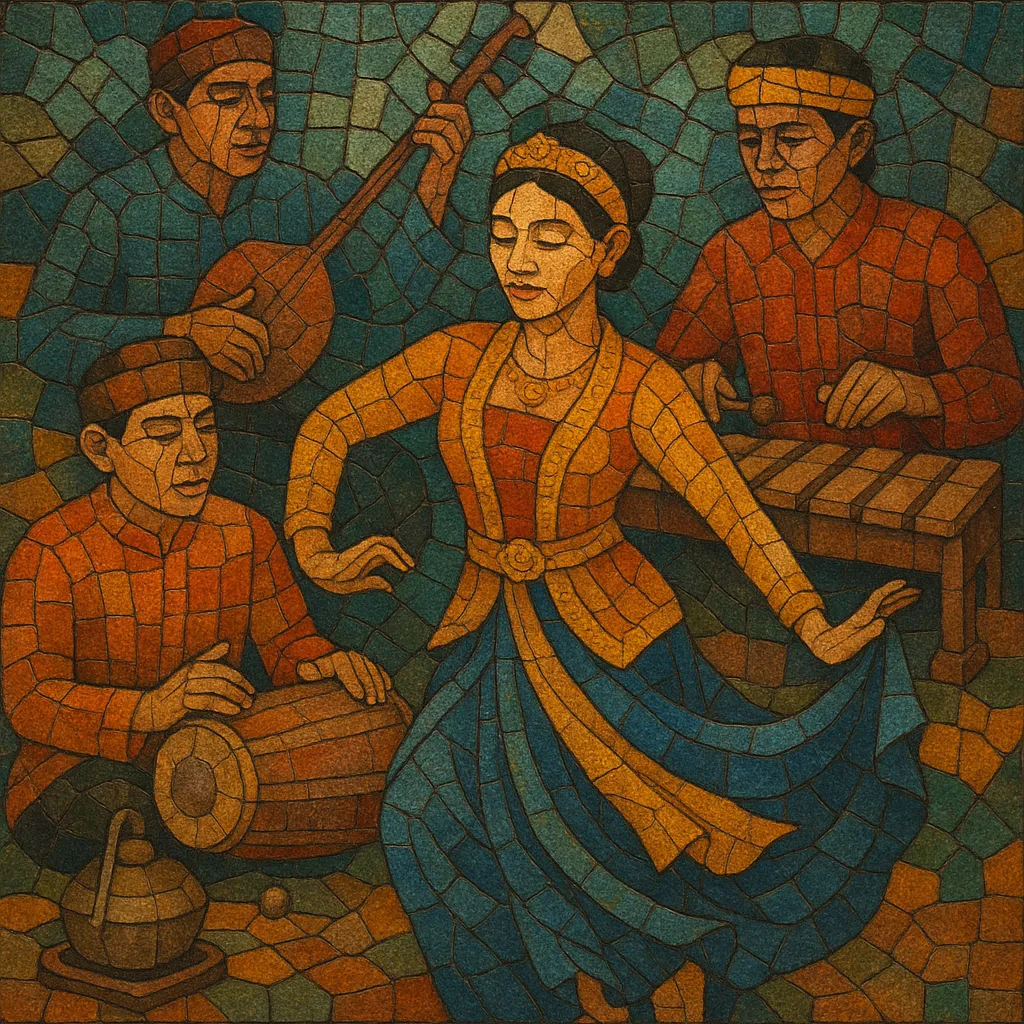Ketuk tilu is a traditional Sundanese social dance-and-music genre from West Java, Indonesia. The name literally means “three ketuk,” referring to a distinctive colotomic pattern articulated by a small kettle-gong (ketuk) that sounds three times within each gong cycle. It is performed by a compact, lively gamelan ensemble led by the kendang (barrel drum), with hallmark colors from rebab (spike fiddle), suling (bamboo flute), saron/metallophones, and a set of gongs.
Historically, performances center a female singer-dancer (sinden/ronggeng) who invites audience members—often men—to join in social dancing (ngibing). The music favors cyclical ostinatos, infectious drum cues, and flexible pacing that follows the dancer’s gestures. Texts often use playful, flirtatious pantun (quatrain) poetry. While village-based and festive in spirit (weddings, harvest celebrations, markets), ketuk tilu is musically sophisticated in its use of Sundanese scalar systems (especially salendro) and its tight drum-led cueing between sections.
Beyond its role as entertainment, ketuk tilu is culturally significant as a precursor to modern Sundanese stage genres. In the late 20th century it was a primary wellspring for jaipongan’s kinetic drumming, dancer-led phrasing, and theatrical presence.
Ketuk tilu emerged in rural West Java in the early 20th century as participatory entertainment for life-cycle events and community festivities. Its signature feature—the three-strike ketuk pattern within the gong cycle—supports continuous social dancing (ngibing), led by a charismatic sinden/ronggeng who sings, dances, and interacts with the audience. The repertoire mixes playful pantun lyrics with proverbial wisdom and gentle flirtation.
The ensemble is a small Sundanese gamelan: kendang (the conductor and engine of tempo/feel), rebab, suling, saron/metallophones, kecrek (time-keeping idiophone), and the gong family (gong, kempul, ketuk). Melodies typically use the Sundanese salendro scale, with cyclical colotomic structures. The drummer’s cues drive transitions between relaxed and excited sections, shaping the dancer’s movement and the audience’s participation.
By the 1970s–1980s, choreographers and bandleaders studied ketuk tilu’s drum language, stagecraft, and dancer-led flow to create jaipongan—an urban concert form that amplified the genre’s kinetic and theatrical qualities. While popular tastes diversified and urbanization altered village festivities, ketuk tilu continued in local cultural circuits and community arts initiatives, valued as a living heritage and a foundational source for contemporary Sundanese performance.
Today, ketuk tilu survives through cultural troupes, arts institutes, and regional festivals in West Java. Some groups present historically grounded sets; others integrate modern staging while maintaining core elements: the ketuk-driven cycle, kendang leadership, social dance invitation, and the sinden’s vocal-poetic role.


